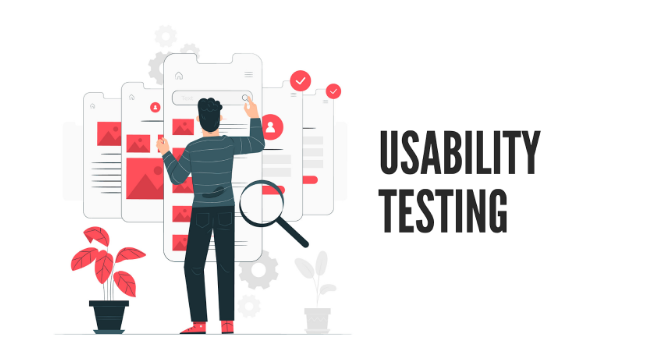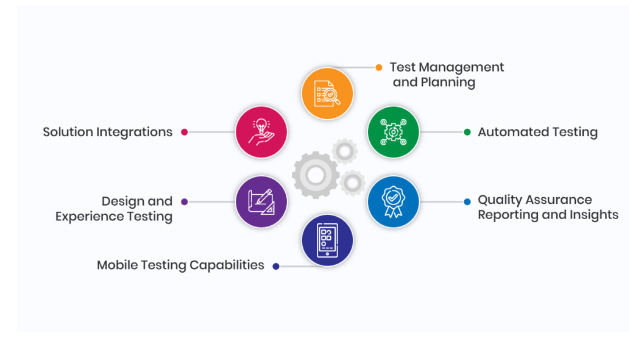Analytics Testing: How to Ensure Accurate Data and Insights
Do you trust the data and insights you’re receiving from your analytics?
If you’re not testing the accuracy of your analytics, you could be making decisions based on faulty information. Inaccurate data can lead to wasted resources, missed opportunities, and even damaging the reputation of your brand.
The good news is that there are steps you can take to ensure the accuracy of your analytics. By implementing a regular testing process, you’ll be able to trust the data you’re receiving and make informed decisions that will benefit your business. In this article, we’ll dive into the importance of analytics testing and provide you with actionable steps to ensure accurate data and insights.
Common Analytics Testing Techniques
Analytics testing techniques are essential to ensuring data analysis’s accuracy and reliability. Several standard techniques used in analytics testing can help identify and correct errors in data. One such technique is A/B testing, which involves comparing two versions of a website or marketing campaign to determine which performs better.
Another technique is regression testing, which involves testing changes made to a system or software to ensure that they do not have unintended consequences on previously working functionality. Additionally, exploratory testing can identify unexpected behaviors or trends in data.
By utilizing these and other testing techniques, analytics professionals can ensure that their data analysis is accurate, reliable, and actionable, leading to better business decisions and outcomes.
What is analytics testing?
Analytics testing verifies data and analytics systems’ accuracy, completeness, and reliability. It is critical for any data-driven organization to ensure that the insights and decisions derived from data analysis are trustworthy and actionable.
Analytics testing involves various techniques and methodologies, including data quality testing, integration testing, regression testing, and user acceptance testing. These techniques help identify errors, inconsistencies, and potential issues in the data and ensure that the analytics systems and processes are working as intended.
Effective analytics testing requires a deep understanding of the data and the analytics tools being used and a rigorous approach to testing and quality assurance. By performing analytics testing regularly, organizations can ensure that their data-driven decisions are based on accurate, reliable data, leading to better business outcomes.
Types of analytics testing techniques
Several analytics testing techniques can be used to ensure the accuracy and reliability of data analysis. Some of the most common types include:
- Data quality testing – this involves checking the accuracy, completeness, and consistency of the data.
- Integration testing – this involves testing the integration of data from different sources, such as databases or APIs.
- Regression testing – this involves testing changes made to a system or software to ensure that they do not have unintended consequences on previously working functionality.
- User acceptance testing – this involves testing the analytics system or software from the perspective of end-users to ensure that it meets their needs and expectations.
- Exploratory testing – this involves testing to identify unexpected behaviors or trends in data.
- Performance testing – this involves testing the speed and efficiency of the analytics system or software.
- Security testing – this involves testing the security of the analytics system or software to ensure that it is protected against unauthorized access or data breaches.
By utilizing these and other analytics testing techniques, organizations can ensure that their data analysis is accurate, reliable, and actionable, leading to better business decisions and outcomes.
How can I use analytics testing techniques to ensure accurate data and insights?
To ensure accurate data and insights, it’s essential to use analytics testing techniques throughout the data analysis process. Here are some steps you can take:
- Define clear objectives and metrics: Before starting any analytics project, it’s essential to define clear goals and metrics to measure success. This will help ensure that the data being analyzed is relevant and accurate.
- Conduct data quality testing: Verify the quality of the data by checking for accuracy, completeness, and consistency. This can include looking for missing values, outliers, and duplicates.
- Utilize integration testing: Test the integration of data from different sources to ensure that it’s combined and processed correctly.
- Conduct regression testing: Test changes made to systems or software to ensure that they do not have unintended consequences on previously working functionality.
- Perform user acceptance testing: Test the analytics system or software from the end user’s perspective to ensure it meets their needs and expectations.
- Conduct exploratory testing: Identify unexpected behaviors or trends in the data that may indicate errors or inaccuracies.
- Perform performance testing: Test the speed and efficiency of the analytics system or software.
- Conduct security testing: Test the security of the analytics system or software to ensure that it is protected against unauthorized access or data breaches.
By using these and other analytics testing techniques, you can ensure that the data being analyzed is accurate, reliable, and actionable. This, in turn, will lead to better business decisions and outcomes.

Common analytics testing mistakes to avoid
Analytics testing is crucial to ensuring data analysis’s accuracy and reliability. However, there are several common mistakes that organizations should avoid when conducting analytics testing. Here are some of the most common analytics testing mistakes to avoid:
- Not defining clear objectives and metrics: With clear goals and metrics, it’s easier to know what data needs to be tested and what results to expect.
- Focusing only on data quality testing: While important more than t, ensuring accurate data and insights are needed. Utilizing other testing techniques, such as integration testing, user acceptance testing, and performance testing, is essential.
- Overlooking exploratory testing: Exploratory testing can help identify unexpected behaviors or trends in data that may indicate errors or inaccuracies. Ignoring this testing technique may result in missing important issues.
- Not involving end-users in testing: User acceptance testing is an essential part of ensuring that the analytics system or software meets the needs and expectations of end-users. It is necessary to involve end-users in testing to ensure an analytics system that meets their needs.
- Relying too much on automation: While automation can be helpful in analytics testing, balancing it with manual testing is crucial. Overreliance on automation may result in missing important issues.
By avoiding these common analytics testing mistakes, organizations can ensure that their data analysis is accurate, reliable, and actionable, leading to better business decisions and outcomes.
Conducting User Testing
User testing is an essential part of developing user-centered products and services. It involves testing products or services with representative users to identify usability issues and gather feedback for improvement. Here are some steps to conduct effective user testing:
- Define objectives and goals: Start by defining clear objectives and goals for user testing. This will help ensure that the testing is focused and productive.
- Select representative users: Identify representative users who are part of the target audience for the product or service. Recruiting users with relevant characteristics, such as demographics or experience, is essential for gathering accurate and actionable feedback.
- Develop test scenarios: Test scenarios or tasks relevant to the tested product or service. These tasks should be designed to test the product’s or service’s usability and functionality.
- Conduct testing: Conduct testing with representative users. Observe how they use the product or service and gather feedback on their experience, preferences, and suggestions for improvement.
- Analyze results: Analyze the results of user testing to identify patterns, trends, and issues. Categorize feedback into common themes, and prioritize areas for improvement.
Incorporate feedback into product or service design: Use the feedback gathered from user testing to improve the development or service design. Implement changes and conduct further testing as necessary.
By following these steps, organizations can conduct effective user testing that leads to the development of user-centered products and services. User testing helps ensure that products and services meet the needs and preferences of their target audience, leading to increased adoption, customer satisfaction, and business success.
What is user testing in analytics?
User testing in analytics involves testing the usability and functionality of an analytics system or software with representative users to identify issues and gather feedback for improvement. The goal of user testing is to ensure that the analytics system or software meets its intended users’ needs and expectations and is easy to use and understand.
Representative users are given tasks to perform during user testing using the analytics system or software. The lessons should be designed to test the system’s various features and functions and simulate real-world scenarios. Observing how users interact with the plan and gathering feedback on their experience can provide valuable insights into areas for improvement.
User testing in analytics can help identify issues such as confusing or unclear user interfaces, slow performance, or missing or inaccurate data. It can also gather feedback on new features or functionality that users find helpful. By incorporating this feedback into the design and development of the analytics system or software, organizations can create a more user-friendly and effective tool for data analysis.
User testing is an integral part of the analytics development process, as it helps ensure that the analytics system or software meets the needs of its intended users and provides accurate and actionable insights.
Why is user testing necessary for analytics testing?
User testing is essential for analytics testing because it helps ensure that the analytics system or software meets the needs and expectations of its intended users. User testing involves testing the usability and functionality of the system with representative users, which can identify issues and gather feedback for improvement.
User testing helps identify issues that may not be apparent during other types of testing, such as data quality or integration testing. By observing how users interact with the analytics system or software, organizations can identify areas for improvement, such as confusing or unclear user interfaces, slow performance, or missing or inaccurate data.
Additionally, user testing can gather feedback on new features or functionality that users would find helpful. This feedback can be used to prioritize developing new features or functionality that will improve the usability and effectiveness of the analytics system or software.
By incorporating user testing into analytics testing, organizations can create a more user-friendly and effective tool for data analysis. User testing can help increase user adoption, improve customer satisfaction, and ultimately lead to better business outcomes.

How to conduct user testing for my website?
Conducting user testing for a website involves testing the usability and functionality of the website with representative users to identify issues and gather feedback for improvement. Here are some steps to conduct effective user testing for a website:
- Define objectives and goals: Start by defining clear objectives and goals for user testing. This will help ensure that the testing is focused and productive.
- Identify representative users: Identify representative users who are part of the target audience for the website. Recruiting users with relevant characteristics, such as demographics or experience, is essential for gathering accurate and actionable feedback.
- Develop test scenarios: Develop test scenarios or tasks relevant to the website being tested. These tasks should be designed to test the usability and functionality of the website, such as finding information, completing a purchase, or navigating the site.
- Conduct testing: Conduct testing with representative users. Observe how they use the website and gather feedback on their experience, preferences, and suggestions for improvement.
- Analyze results: Analyze the results of user testing to identify patterns, trends, and issues. Categorize feedback into common themes, and prioritize areas for improvement.
- Incorporate feedback into website design: Use the input gathered from user testing to improve the website design. Implement changes and conduct further testing as necessary.
By following these steps, organizations can conduct effective user testing for their website, which leads to the development of a user-centered website. User testing helps ensure that the website meets the needs and preferences of its target audience, leading to increased user engagement, customer satisfaction, and business success.
Key metrics to track during user testing
Tracking critical metrics during user testing can help organizations evaluate their website’s effectiveness and identify improvement areas. Here are some key metrics to track during user testing:
- Success rate: The percentage of users who complete a task or achieve a specific goal on the website.
- Time on task: The amount of time it takes users to complete or achieve a specific goal on the website.
- Task completion time: The amount of time it takes users to complete each individual task or goal on the website.
- Error rate: The percentage of users encountering errors or issues while using the website.
- Task abandonment rate: The percentage of users who abandon a task or goal without completing it.
- User satisfaction: Gathering user feedback on their experience using the website and tracking their satisfaction levels.
- User engagement: Tracking how long users stay on the website, how many pages they visit, and how often they return.
By tracking these key metrics, organizations can identify areas where users are experiencing issues or frustration and improve the website to improve the user experience. Additionally, monitoring user satisfaction and engagement can provide insights into how users perceive the website and how likely they are to return, which can significantly impact the website’s success.
Using user testing to ensure accurate data and insights
User testing can be a valuable tool for ensuring accurate data and insights in analytics. By testing the usability and functionality of an analytics system or software with representative users, organizations can identify issues that may affect the accuracy and reliability of the data.
During user testing, representative users can be asked to perform tasks that involve data analysis, such as running reports or interpreting visualizations. Observing how users interact with the analytics system or software can provide insights into areas where the data may be inaccurate or difficult to interpret.
Additionally, user testing can ensure the analytics system or software is user-friendly and intuitive, leading to more accurate data analysis. Users who find the system difficult to use may be more likely to make mistakes or overlook essential insights.
By incorporating user testing into the analytics development process, organizations can ensure that their data analysis is accurate, reliable, and actionable. User testing can identify issues that impact the quality of the data and ensure that the analytics system or software meets the needs and expectations of its intended users. This, in turn, can lead to better business decisions and outcomes.

Data Quality Assurance
Data quality assurance is the process of ensuring that data is accurate, complete, and consistent. It is a critical aspect of data management, as inaccurate or inconsistent data can lead to incorrect insights and decisions.
There are several steps involved in data quality assurance, including:
- Data profiling: Examining the data to identify potential issues, such as missing values, outliers, or inconsistencies.
- Data cleansing: Removing or correcting any errors or inconsistencies in the data.
- Data validation: Ensuring the data meets specified criteria, such as format or range.
- Data monitoring: Regularly monitoring the data to ensure that it remains accurate and consistent.
- Data governance: Establishing policies and procedures for managing data quality and assigning responsibility for data quality to specific individuals or teams.
Adequate data quality assurance requires a deep understanding of the analyzed data and the tools and processes used to manage it. It also requires ongoing monitoring and improvement to ensure the data remains accurate and reliable.
By implementing data quality assurance processes, organizations can ensure that their data is accurate, complete, and consistent, leading to better insights and decisions. Additionally, data quality assurance can help build trust in the data, making it more valuable for decision-making.
Why is data quality assurance necessary for analytics testing?
Data quality assurance is critical for analytics testing because the accuracy and reliability of data can significantly impact the insights and decisions made based on that data. If the data being analyzed needs to be more accurate or complete, the wisdom and findings from that data may also be wrong, leading to adverse business outcomes.
Data quality assurance helps ensure the data being analyzed is accurate, complete, and consistent. This, in turn, helps ensure that the insights and decisions made based on that data are also precise and reliable.
By implementing data quality assurance processes, organizations can identify and correct any errors or inconsistencies in the data before it is analyzed. This can involve cleaning the data, validating it against defined criteria, and monitoring it over time to ensure it remains accurate and consistent.
Data quality assurance is also essential for ensuring that the analytics system or software is effective. If the data being analyzed needs to be more accurate or complete, it can be challenging to evaluate the effectiveness of the analytics system or software.
Data quality assurance is a critical component of analytics testing because it helps ensure the accuracy and reliability of the data being analyzed. This, in turn, leads to more accurate insights and better business outcomes.
How to implement data quality assurance processes?
Implementing data quality assurance processes involves several steps. Here are some critical steps to consider when implementing data quality assurance processes:
- Define data quality standards: Start by defining the data quality standards that need to be met, such as accuracy, completeness, consistency, and timeliness.
- Identify data quality issues: Conduct data profiling to identify data quality issues such as missing values, outliers, or inconsistencies.
- Develop data quality rules: To address identified data quality issues, develop rules and procedures. These may include data cleansing procedures, validation rules, and monitoring processes.
- Assign data quality responsibilities: Assign responsibilities for data quality assurance to specific individuals or teams. This includes duties for monitoring, reporting, and addressing data quality issues.
- Implement data quality tools: Use data quality tools to automate data quality assurance processes, such as data profiling, cleansing, and validation.
- Monitor and improve data quality: Continuously monitor and improve data quality assurance processes to ensure the data remains accurate and reliable.
By following these steps, organizations can implement data quality assurance processes that help ensure the accuracy and reliability of their data. Adequate data quality assurance requires a commitment to ongoing monitoring and improvement and the use of appropriate tools and technologies. By implementing data quality assurance processes, organizations can make more informed decisions based on accurate and reliable data, leading to better business outcomes.

What are some common data quality assurance mistakes to avoid?
Data quality assurance is a critical aspect of data management, but there are several common mistakes that organizations should avoid when implementing data quality assurance processes. Here are some of the most common data quality assurance mistakes to avoid:
- Not defining clear data quality standards: With clear data quality standards, it’s easier to know what data needs to be tested and what results to expect.
- Focusing only on data cleansing: While data cleansing is essential, more is needed to ensure data quality. Utilizing other data quality assurance techniques, such as data profiling, validation, and monitoring, is necessary.
- Overlooking data lineage: Data lineage is the documentation of where data comes from, how it is transformed, and where it goes. With understanding data lineage, ensuring that data quality is maintained throughout the data lifecycle is easier.
- Not involving stakeholders: Data quality assurance is a cross-functional effort that involves various stakeholders, including business users, data owners, and IT teams. Failing to include stakeholders can lead to incomplete or inaccurate data quality testing.
- Relying too much on automation: While automation can be helpful in data quality assurance, it’s crucial to balance it with manual testing. Overreliance on automation may result in missing important data quality issues.
By avoiding these common data quality assurance mistakes, organizations can ensure that their data is accurate, complete, and consistent. Adequate data quality assurance can lead to more accurate insights and better business outcomes.
Tools for Analytics Testing
Several tools available for analytics testing can help organizations ensure the accuracy and reliability of their analytics systems or software. Here are some standard tools for analytics testing:
- Selenium: Selenium is an open-source tool widely used for the automated testing of web applications. It supports various programming languages and can be used for functional, regression, and cross-browser testing.
- Apache JMeter: Apache JMeter is an open-source tool used for load testing and performance testing of web applications. It can simulate many users and requests to test the performance and scalability of the application.
- IBM Rational Functional Tester: IBM Rational Functional Tester is a commercial tool for automated functional testing of web and client/server applications. It supports various programming languages and testing frameworks and can be used for regression and integration testing.
- HP LoadRunner: HP LoadRunner is a commercial tool used for web and mobile application load testing and performance testing. It can simulate many users and requests and be used to test the performance and scalability of the application.
- Apache Kafka: Apache Kafka is an open-source distributed streaming platform that is used for real-time data processing and analytics. It can handle large volumes of data and process and analyze data in real time.
Organizations can use these tools for analytics testing to ensure that their analytics systems or software are accurate, reliable, and effective. These tools can help identify issues and gather feedback for improvement, leading to more accurate insights and better business outcomes.
What are some popular analytics testing tools?
Many popular analytics testing tools in the market can help organizations ensure the accuracy and reliability of their analytics systems or software. Here are some of the most popular analytics testing tools:
- Google Analytics: Google Analytics is a free web analytics service that provides insights into website traffic and user behavior. It is widely used for tracking website performance, user engagement, and conversion rates.
- Tableau: Tableau is a data visualization tool used to create interactive visualizations and dashboards. It is widely used for data exploration, analysis, and reporting.
- Microsoft Power BI: Microsoft Power BI is a business analytics service that provides insights into business data. It is widely used for data analysis, visualization, and collaboration.
- Apache Hadoop: Apache Hadoop is an open-source software framework that is used for storing and processing large volumes of data. It is widely used for big data processing, analysis, and machine learning.
- Apache Spark: Apache Spark is an open-source data processing engine for large-scale data processing and analytics. It is widely used for processing and analyzing large volumes of data in real time.
By using these analytics testing tools, organizations can ensure that their analytics systems or software are accurate, reliable, and effective. These tools can help identify issues and gather feedback for improvement, leading to more accurate insights and better business outcomes.
How can I choose the right analytics testing tools for my website?
Choosing the right analytics testing tools for your website involves several key factors. Here are some factors to consider when selecting analytics testing tools:
- Type of Analytics: Determine the kind of analytics you need to perform. For example, if you need to track website performance, consider web analytics tools like Google Analytics. If you need data analysis, feel data visualization tools like Tableau.
- Data sources: Consider the sources of data that you need to analyze. Some analytics testing tools may be better suited for analyzing structured data, while others may be better suited for analyzing unstructured data.
- Integration: Determine whether the analytics testing tools can integrate your existing systems and platforms. This helps ensure the devices are easy to use and can provide a seamless user experience.
- Cost: Consider the cost of the analytics testing tools, including any licensing fees, maintenance costs, and training charges.
- User interface: Evaluate the user interface of the analytics testing tools to ensure that it is easy to use and navigate. This can help ensure the tools are accessible to all users, regardless of their technical skill level.
- Scalability: Consider the scalability of the analytics testing tools to ensure that they can handle large volumes of data and users.
By considering these factors, organizations can select the analytics testing tools that best meet their needs and requirements. Additionally, it’s essential to evaluate multiple devices and compare their features, costs, and benefits to make an informed decision.

Key features to look for in analytics testing tools
When choosing analytics testing tools, there are several key features that organizations should consider. Here are some of the essential elements to look for in analytics testing tools:
- Integration with other systems: Look for analytics testing tools that can integrate with other systems and tools used by your organization. This helps ensure the tools are easy to use and provide a seamless user experience.
- Data visualization capabilities: Look for tools that provide data visualization capabilities, such as charts, graphs, and dashboards. This can help make it easier to analyze and understand complex data sets.
- Data processing and analysis capabilities: Look for tools that provide robust data processing and analysis capabilities, such as machine learning algorithms and statistical analysis tools.
- Customization options: Look for tools that provide customization options, such as the ability to create custom reports or dashboards. This can help ensure that the devices meet your organization’s specific needs.
- Collaboration features: Look for tools that provide collaboration features, such as sharing reports and dashboards with others in your organization. This can help improve communication and cooperation among team members.
- Scalability: Look for tools that can handle large volumes of data and users. This can help ensure the devices are suitable for large organizations or for analyzing complex data sets.
By considering these features, organizations can select analytics testing tools that meet their needs and requirements. Additionally, it’s essential to evaluate multiple devices and compare their features, costs, and benefits to make an informed decision.
Common mistakes to avoid when using analytics testing tools
When using analytics testing tools, there are several common mistakes that organizations should avoid. Here are some of the most common mistakes to avoid:
- Not defining clear goals and objectives: Before using analytics testing tools, you must define clear goals and objectives for what you want to achieve. This can help ensure that you are using the tools effectively and are focusing on the right metrics.
- Focusing too much on vanity metrics: Vanity metrics, such as page views or social media followers, may look impressive, but they don’t necessarily provide valuable insights into your business performance. Instead, focus on metrics directly impacting your business goals, such as conversion rates or revenue.
- Neglecting data quality: Analytics testing tools rely on accurate and reliable data to provide valuable insights. Poor data quality can lead to fundamental insights and decisions. Implement data quality assurance processes to ensure your data is accurate and reliable.
- Not validating the results: It’s essential to validate the results produced by analytics testing tools to ensure that they are accurate and reliable. Use multiple sources of data and cross-check the results to verify their accuracy.
- Overreliance on automated tools: While automated analytics testing tools can be helpful, they should be balanced with manual testing and validation. Overreliance on automated tools can lead to missed issues or inaccurate insights.
By avoiding these common mistakes, organizations can use analytics testing tools effectively and gain valuable insights into their business performance. It’s essential to approach analytics testing with a clear understanding of goals and objectives, a commitment to data quality, and a balanced approach to automated and manual testing.
Conclusion
Final thoughts on analytics testing
Analytics testing is a critical component of data management that helps ensure the accuracy and reliability of analytics systems or software. Organizations can gain valuable insights into their business performance and make informed decisions by implementing data quality assurance processes, conducting user testing, and using appropriate analytics testing tools.
However, it’s essential to approach analytics testing with a clear understanding of goals and objectives, a commitment to data quality, and a balanced approach to automated and manual testing. Additionally, it’s essential to continuously monitor and improve analytics testing processes to ensure that the data remains accurate and reliable over time.
Overall, analytics testing is a powerful tool for organizations to gain insights into their business performance and make informed decisions. Organizations can improve their data quality and drive better business outcomes by implementing effective analytics testing processes and utilizing appropriate tools.



